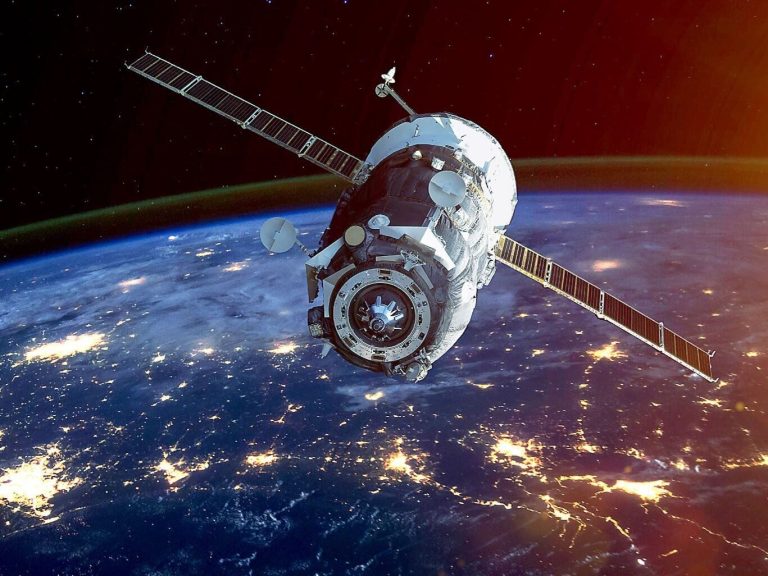Here are the visual technology trends you can't miss

Chad Kunimoto of Panasonic Connect explains how innovations in imaging technology are helping to increase interaction and interest among visitors to attractions around the world.
Reaching an annual turnover of $180 billion in 2021, the video game industry far outweighed the earnings of the film and music industries combined. As game studios continue to develop various forms of thematic entertainment, consumer interest in interactive play experiences is becoming more and more noticeable. Audiences now expect a level of participation in entertainment that seemed impossible just a decade ago.
Interactivity is becoming a key element in various areas of life, such as commerce, art, entertainment, museums, local attractions and live performances, . This is because this phenomenon attracts people by offering them a break from their routine and giving them a chance to immerse themselves in the experience. The growing demand for this way of engaging the audience is attracting the attention of many attraction designers, who are increasingly taking it into account in their work. With technological progress and the increase in knowledge, the possibilities of integrating content into spatial concepts are developing to such an extent that even the most ambitious creative visions become achievable.
Immersive projection is an effective way to create dynamic spaces that come to life and interact with viewers thanks to advanced technologies. Using specialized sensors and software, we can experience a world that responds not only to our movement, but can also track our eyesight.
Increasingly, audiences can also add augmented reality layers to objects or digital backgrounds using their devices. This is made possible by technologies such as NFC, infrared, GPS and iBeacon, which act as bridges connecting us directly to the new space. Projectors have so far mainly played a support role, but thanks to innovations in the field of motion-tracking projection and advanced UST lenses, they are starting to play the first fiddle, taking us to the very center of the created worlds.
A new dimension of entertainment with projection mapping
The use of projection techniques on dynamic objects is nothing new, but only now, thanks to Panasonic Connect technology, has it been possible to experience a real revolution in this field. Until now, traditional methods often required complex setup and precise calibration and had limited potential. The latest developments in high-speed projection have resulted in models operating at 240 Hz and a projection programming kit that maps motion in real time. This creates completely new perspectives for combining digital content with physical traffic, eliminating any delays.
This intuitive software instantly transforms movements captured by the IR camera into precise coordinates for the projector, achieving response speeds of less than 5 ms. By continuously updating the object's position, up to 240 times per second, projected images smoothly follow the object without blur.
This innovative system allows artists to be spontaneous while performing on stage and eliminates the need to learn complex sequences. The visual content adapts to their movements, creating a unique experience. Additionally, the audience can immerse themselves in spaces resembling virtual reality, without the need to put on specialized glasses or helmets. Best of all, the entire system is extremely easy to set up and does not require complicated calibration.
We have always believed that the era of real-time interactive content is coming. The concept of “interactive content” has not yet caught on beyond certain types of content such as games. I believe that applications like the Meta Gallery exhibition at the Seoul Art Center in South Korea are the fruit of the imagination of creators and performers, and therefore all have potential. I believe we can be a driving force in the era where 240Hz will eventually become the norm, emphasizes Ken Mashitani, a key engineer involved in the development of Panasonic Connect's high-speed immersive projection system.
The possibilities opened up by 240 Hz mapping projection technology seem endless. It is used in a variety of areas – from sports simulators, through mysterious adventure rides, to stage shows, concerts and gallery exhibitions. The market is evolving from simply consuming content towards a desire for authentic experiences, and the opportunities to leverage low-latency projection technology will only grow. It may even spark the birth of new sports and activities, opening up entirely new avenues for entertainment and excitement.
Surrounding projection creates universes through the play of light
The depth, colors and contrast of laser projection have become so realistic that visitors can now interact with places that previously seemed unattainable, from the wild African jungle to the surface of the moon. Native 4K projection pushes boundaries by creating incredibly realistic worlds from empty white space, reminiscent of the magical transformations seen in The Matrix.
Illuminarium's innovative attractions in Las Vegas and Atlanta in the United States are stunning examples of how native 4K projection, multi-sensory elements and interactive content can transform an empty room into a vibrant place.
Meanwhile, in Australia, ACMI (Australian Center for the Moving Image) has introduced a digital-first approach similar to the Wonderland exhibition. This fascinating exhibition transported visitors to a magical world of interactive entertainment, where digital content brought the walls, floors, furniture and even tea sets to life. This projection made this event one of the most popular on social media, attracting crowds of people wanting to experience it for themselves.
Get up close and personal
Ultra short throw lenses allow guests to interact with the image without casting shadows on the screen. Assembly specialists eagerly use modern zoom devices available for 1-Chip and 3-Chip DLP and 3LCD platforms, appreciating their ease of installation, the possibility of zero image shift and a wide range of customizations. Thanks to them, participants can get closer to the screen and interact with the projection together, taking advantage of the impressive image size and elimination of shadows.
Non-shift lenses eliminate unwanted gaps at the top and bottom of the image, which increases the level of immersion. Additionally, the glass elements they contain prevent focal distortions caused by temperature changes.
Inspiring examples of the use of these lenses in the field of educational entertainment are emerging all over the world, such as the Snowy Hydro Discovery Center near Sydney, Australia. The venue offers a unique experience, using layers of satellite imagery, volumetric mapping and interactive content to allow guests to explore a fantastically detailed and immersive projection of the catchment area.
Moreover, the lenses enable the installation of projectors even in the narrowest of spaces, opening up new opportunities to transform unused areas into attractive meeting and entertainment points.
The art of maintenance – the key to attraction success
After the pandemic subsided, interest in sports simulations skyrocketed. Thanks to a combination of sensors and advanced software, projection now delivers a completely immersive, interactive experience at a relatively low cost.
Operators who need to keep a projector running continuously for long periods of time look for products that offer the best performance to minimize operation and maintenance costs while ensuring the right image quality for a complete, engaging experience.
A great example is the golf simulation, which became a huge hit. Some operators are reporting a fivefold increase in inquiries during the pandemic.
Combine the best of both worlds
Projection increasingly enhances performances with actors on stage or within the attraction itself to provide realistic and immersive content that can be interacted with. This solution was used during the celebration of the 175th anniversary of the Antwerp Zoo, where virtual representations replaced live animals in stage roles, which brought a new dimension to the event.
Similarly, at the Zukan Museum in Tokyo, a projection allowed children to interact with exotic animals, bringing to life the popular NEO animal encyclopedia series.
This is just the tip of the iceberg of the possibilities offered by modern projection technology. However, it is clear that it has the potential to create unique, engaging experiences that engage visitors on a deeper level.






